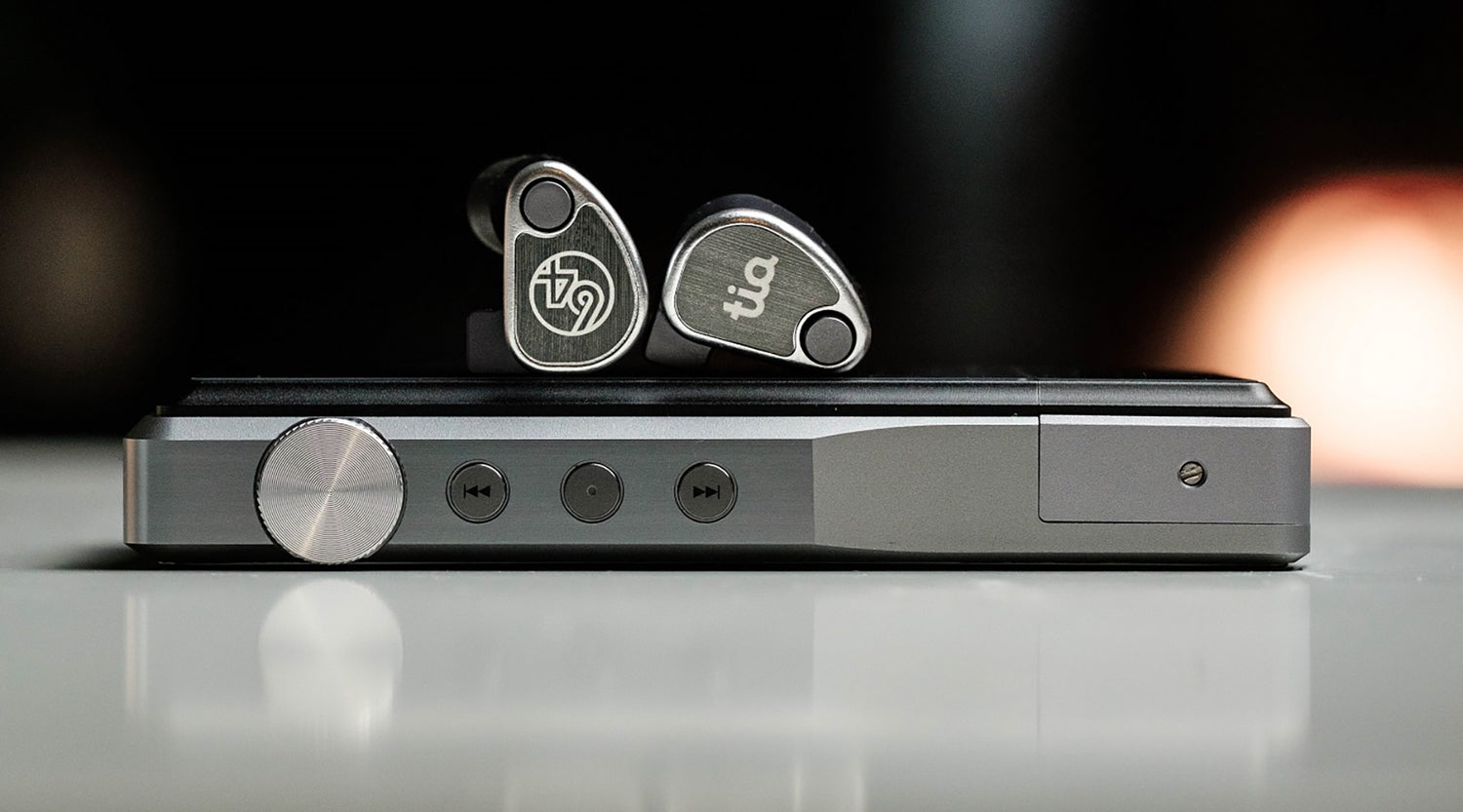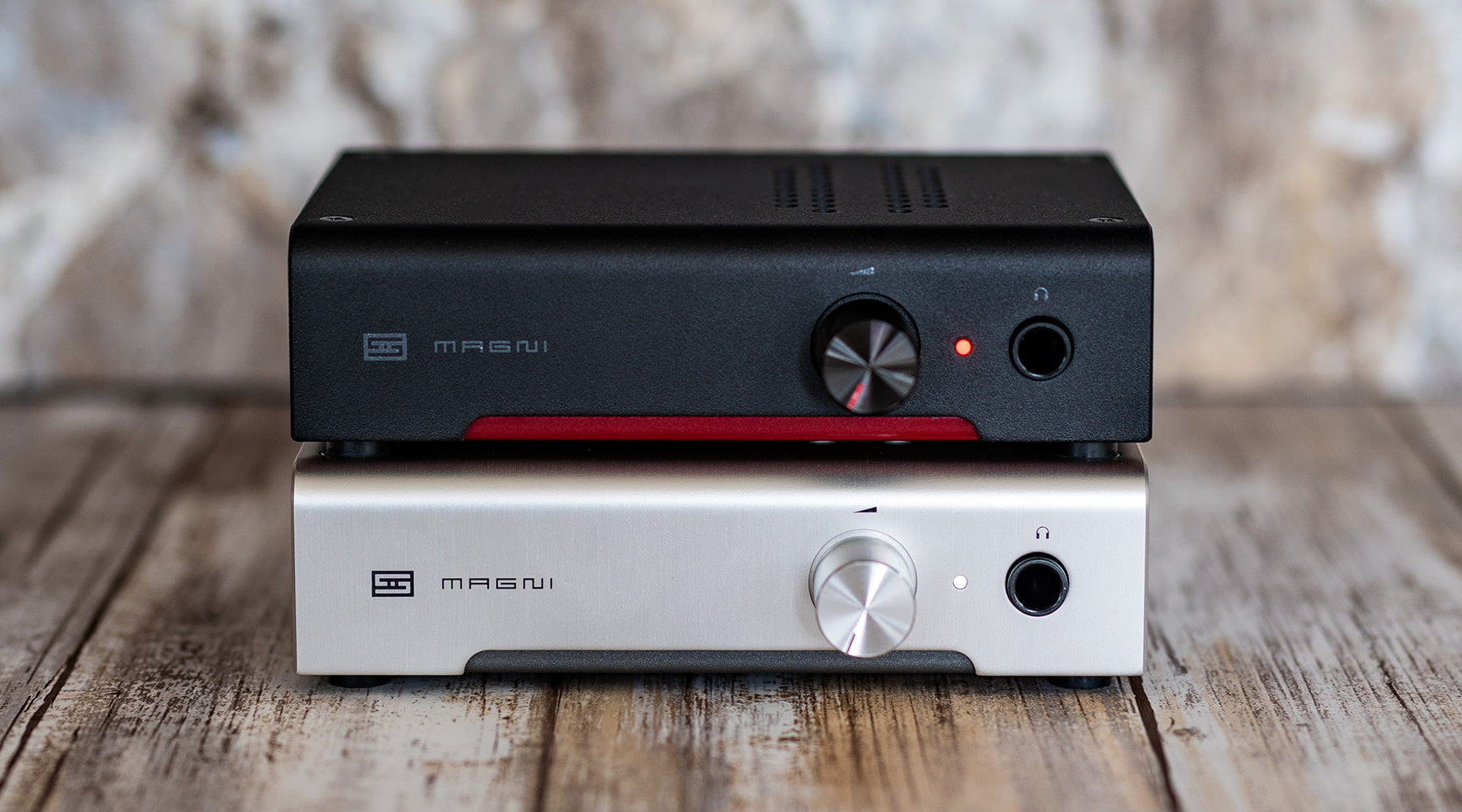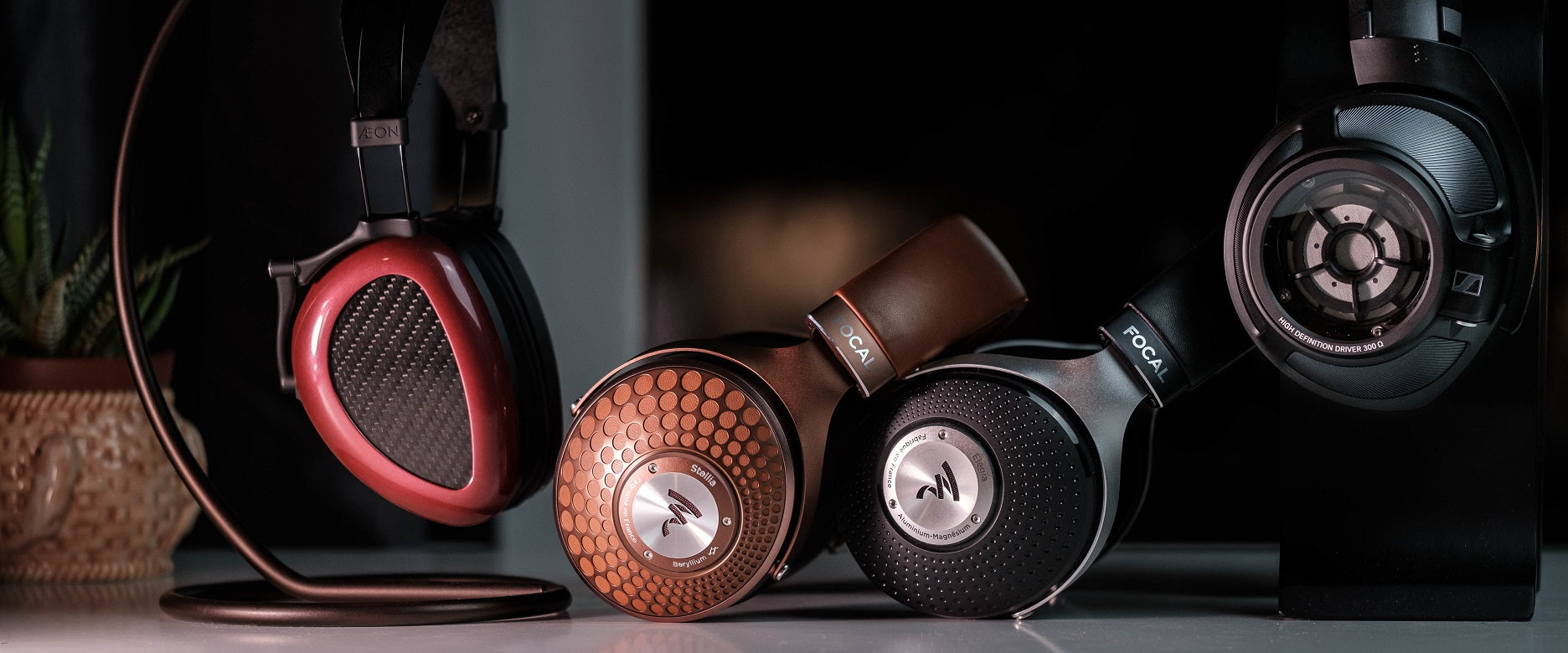Review written by Andrew Park (@Resolve)
Introduction
When diving into the world of high performance multi-balanced armature IEMs, one starts to notice a number of things. While they may perform quite well, they generally have a distinctly similar sound to one another. Moreover, the same way that planar magnetic over-ear headphones sound different from dynamic driver headphones, multi-BA IEMs sound distinctly different from dynamic driver IEMs - and also those that use balanced armatures drivers exclusively also are easy to distinguish from hybrid configurations.

This review unit was provided by headphones.com and the community preview program.
Unfortunately the fact that they’re so distinguishable and recognizable isn’t actually a good thing in this case. Much of the BA sound can be characterized by a noticeable and unpleasant timbre, or as I like to describe it - a metallic smearing or straining effect that often obscures detail. Suddenly equipment that should transport you into a acoustic tapestry of sound transports you instead into a dystopian future filled with the dulcet tones of scraping metal. The other major similarity is that BA driver IEMs often lack the excursive capabilities to properly handle bass frequencies, or at least, bass frequencies are often left feeling a limp and lifeless, being neither tight nor dynamically engaging.
These were my two biggest fears when I heard about the U12T. Here’s yet another multi-BA IEM, and in the context of successful hybrid designs that employ dynamic drivers to handle bass frequencies for precisely the concerns just mentioned, it made me wonder if this was something I’d be able to enjoy. Spending several weeks with the U12T has made me realize just how wrong my expectations were. It turns out that not all multi-BA IEMs suffer the same limitations, and importantly not all balanced armature drivers are created equally.
Specs
- Driver Type/Count: Twelve precision balanced armature drivers
- Driver Configuration: 1 ‘tia’ high, 1 high-mid, 6 mid, 4 low
- Sensitivity: 108db dB/mW
- Impedance: 12.6 +1/-2 Ω from 10Hz – 20kHz
- Crossover: Integrated 4-way passive crossover
- Isolation: -20dB w/ m20 module, -15dB w/ m15 module
- Price: $2000
Source
- FLAC Library, Tidal, (ROON) - iFi iDSD Micro Black Label -> 64 Audio U12T
- Tidal - Audioquest Dragonfly Cobalt -> 64 Audio U12T
- Tidal - Radsone Earstudio ES100 -> 64 Audio U12T
- FLAC - iBasso DX220 -> 64 Audio U12T
Music
I test with a series of tracks for a range of genres. For Jazz I use Patricia Barber to test for sibilance, along with Holly Cole, GoGo Penguin, and Molly Johnson. For classical I use YoYo Ma plays Ennio Morricone. For more ambient experimental electronic music I’ve been listening to a lot of Nils Frahm, and for more aggressive music it’s generally Periphery, Opeth, or Dream Theater.
In the box
- U12t Universal In-Ear Monitors
- 64 Audio Personalized Protective Case
- Dehumidifier
- Cleaning Tool
- Shirt Clip
- TrueFidelity Eartips (S,M,L)
- Silicone Eartips (S,M,L)
- 48" Detachable Premium Cable
- m20 apex Modules
- m15 apex Modules
- Round Sticker
- Product Manual
Build, Design & Comfort - 9/10
When you first pick up the U12T, it doesn’t look like anything all that special, but when I compare it to other IEMs that have been designed specifically to look flashy and exciting (and in some cases are overly bulky and cumbersome) you begin to really appreciate its understated design. As the initial letter indicates, this is a universal fit IEM, and I find that its simple design with rounded sides make it relatively inoffensive to wear - even in comparison to those from Campfire Audio. I find myself not noticing that they’re there, and I think most people will have no trouble with the fit.

For the cable, the U12T uses a 2 pin connector, which I find at least as good as the MMCX style, and on the whole the cable feels reasonable, if perhaps not as tangle-free and convenient as the cable on the Solaris. As a personal note, I like that it’s black - that’s just my thing.
Importantly, the U12T also features a bit of customization that’s present in its design. On the outside of each earpiece is a cylindrical module that sticks out slightly. This is 64 Audio’s ‘Apex’ module, and they provide an additional set in the box. This cylinder is designed as a porting or venting mechanism that alleviates pressure, but it also does change the frequency response slightly. The most noticeable difference is in the bass response. For those who want more bass emphasis, you can swap to the silver module, however I found I preferred the dark grey module for a more balanced sound.

Lastly, the U12T uses what they call a ‘Tia’ driver, and the claim is that this is an open driver that’s also ‘tubeless’ - meaning it’s strategically implemented in such a way that the frequencies from this driver are unimpeded by any other feature. It’s interesting to note that this is the only driver that’s designated to handle the high frequencies. The rest are dispersed with one handling the high-mids, 6 handling the midrange, and 4 handling the bass frequencies. It should also be mentioned the U12T features 64 Audio’s Linear Impedance Design (LID), which in theory allows the IEM to be used on a wider range of sources and fixes the issue many other BA IEMs suffer from where the frequency response changes dramatically depending on the source’s output impedance. Most of my sources are less than 1 ohm output impedance, and fortunately for most audiophiles, sources like that are becoming more and more common, but it’s nice to know that the U12T isn’t as picky as many other IEMs, and I certainly found no issue with source pairings.
Performance
The U12T is immediately impressive for its technical performance alone. The most surprising aspect of this is its performance for bass frequencies below 100hz. As mentioned, I was expecting a well-performing IEM for mids and treble, and I was not ready for how absolutely mind blowing the bass is on the U12T. Needless to say, for its technical performance, the U12T has changed what I expected the ceiling to be for multi-BA IEMs. One quick note about the eartips. The U12T does come with a number of eartips, and the standard experience variation for the interaction between tips and ear canal still applies. In general, silicone tips are likely to perform ever so slightly better, but it’s important to get the fit right, and I find that generally foam tips suit me better.
Detail Retrieval - 9.5/10
While I’m impressed with the bass, I’m equally impressed with the treble, if not more so. It’s amazing that this is also handled by the single ‘Tia’ driver, and it really shows how capable the ‘tubeless’ driver design is. I’m reminded of how impressive certain high performance nano-scale planar over-ear headphones are in the treble, it’s that good. Now while it doesn’t have quite the same textural nuance capability as those over-ears, it certainly has the same sharpness and image definition. In the treble especially, it’s as if the edges of certain percussive instruments are slightly more well defined. This gives the perception of the images a bit better structure, clarity and separation. Without question, this is the most detailed treble in an IEM I’ve heard yet.
Speed & Dynamics - 9/10
The U12T is on the better end of typical BA driver speed, which is already decent, just not quite on the same level as recent entries of planar tech into the IEM world, such as the LCD-i3 and LCD-i4. In this case, however, the U12T sound incredibly punchy, tight, and articulate. Dynamics are also truly impressive for a multi-BA IEM. Here’s where the bass ability really shines. 64 Audio’s success in the bass with the U12T demonstrates that it is possible to get incredibly tight, well defined and engaging bass with this type of driver tech, and maybe it means that getting this kind of sound requires allocating more drivers specifically for those bass frequencies. Remember that the U12T uses 4 of its 12 drivers for the bass. If you compare this to many other multi-BA IEMs, they often allocate more drivers to mids and treble instead. Now it’s not on the same level of ‘slam’ as what you get with high excursion dynamic drivers in the sub-bass, but it’s very close. Moreover, it also feels quite a bit tighter and well-controlled than many IEMs that use dynamic drivers for bass frequencies, including the Campfire Audio Solaris.
Stage & Imaging - 9/10
Normally I don’t look too closely at stage size and depth in IEMs, but the U12T again impresses me here to the point of having to throw out yet additional expectations for technological limitations. The center image is slightly forward and intimate, but there’s enough distance laterally that stage left and stage right really sound like they’re being thrown quite wide. But more importantly, the image distinction and separation are spectacular, likely due to the increased detail capabilities, and I find that the imaging is pleasantly even in its distribution across the stage. It doesn’t have the same depth capabilities as flagship planar over-ears around this price, so it’s still not ‘speaker-like’ in its presentation, but for an in-ear, this is also excellent.
Timbre - 8/10
The other much maligned issue with BA IEMs is of course the dreaded BA timbre, and the U12T thankfully doesn’t exhibit it as noticeably as others. It’s still there if you specifically listen for it, but it doesn’t become distracting or draw attention away from the music. Compared to dynamic driver IEMs, it’s still not as natural sounding, but if that’s the price to pay for the kind of sharpness and clarity the U12T does exhibit, I think most will be willing to deal with the slight BA timbre that is there. For every other high end BA IEM I’ve tried, I find it distinctly more noticeable in the treble, and this again shows how impressive the single ‘Tia’ driver is.

Tonality
I find the tonality using the grey Apex module to be exceptional. With the silver Apex module, the bass is slightly elevated. It’s only really noticeable for tracks that make use of the full frequency range, but my preference is still with the grey inserts. It’s ever so slightly emphasized in the bass and in the treble, but not at the expense of any significant recession in the midrange. At most, it’s tastefully withdrawn by a 1-2 dB throughout the midrange, but I find this isn’t all that dissimilar from many high end planars from HiFiMAN. In fact, I think many could be persuaded that this does also impart a bit of clarity, adding emphasis to the treble region. More importantly, the treble itself is almost perfectly balanced with unmatched extension and transparency.
To be more specific, far too frequently I find that in an effort to make things sound more detailed, IEMs will often have boosted frequency ranges either in the lower treble or in the consonant range, and usually this leads to a splashy yet compressed sound - especially for cymbal hits. This kind of elevation may impart a bit of extra energy to certain sounds, but it does so at the cost of overall tonal balance, and with the U12T, that’s not the case. It’s still ever so slightly emphasized beyond the consonant region, past 8.5khz, but this is only to the benefit and clarity of percussive instruments. To put this another way, you notice cymbals, high hats, and snare drums slightly more than you would if you were to listen to the music live because the edge of the frequency range of where those instruments fall may be slightly elevated. Think of a cymbal hit that reaches 11-12khz, and the upper end of the sizzle is elevated ever so slightly. But in this case I actually think it’s done so carefully that it’s an enjoyable quality - it adds clarity and structural definition to the images, and the U12T’s impressive detail retrieval makes this all the more enjoyable. Moreover, the lower treble isn’t withdrawn at all and there’s no dramatic tonal imbalance, so on the whole it allows percussive hits that make use of upper frequency ranges to be that much more visceral.
If I had to describe the U12T’s frequency response in several words it would be “natural with a bit of flare up top”. Make no mistake, this is not a laid back and relaxing kind of sound, even if there’s a slight bass emphasis. The treble is articulate, highly detailed, with extreme extension capabilities, and to some this may end up being a bit fatiguing over time. Thankfully, however, there’s no sibilance, harshness, or grain to the consonant range at 8.5khz. The only real criticism I can think of for the tonality is that the midrange doesn’t come through as strongly, but as mentioned, this also confers a bit of clarity and resolution to the treble.
Think of the U12T as a 4k image that was captured with an extremely sharp macro lens. While other IEMs may achieve the 4k image, it’s not always rendered with the sharpest lens. And while sharpness and clarity aren’t everything, the U12T certainly demonstrates those qualities well.
Score - 9.5/10

Comparisons
Campfire Audio Solaris ($1499)
The Solaris uses a 3BA 1DD hybrid configuration where the dynamic driver handles the bass frequencies. It’s also very obvious, because the slam and impact of the the Solaris is impressive. Moreover, the Solaris’ treble extension and detail capability are both exceptional. While a bit more laid back than the U12T, the Solaris is still incredibly resolving up top. To me the U12T has slightly better treble response with a bit more clarity for the transition between the upper midrange and treble, as well as a slightly tighter bass response. Yes, the Solaris hits with a bit more ‘slam’ down low, but it’s not as tight or articulate as the U12T.
Noble Audio Kaiser Encore ($1850)
The Kaiser Encore uses a 10 balanced armature configuration, and on the whole it performs reasonably well, with good extension for both bass and treble. It’s a bit more emphasized in the consonant range than the U12T, but not exactly to the point of being sibilant. The one downside, however, is that this emphasis can cause certain cymbal hits to sound a bit splashy and unnatural by comparison. While the U12T is more expensive, to my ear it has better treble resolution and transparency, while at the same time also having better bass impact and control.
Audeze LCD-i3 ($899)
The i4 is a more fair comparison, but for those who are wondering what they’re missing if they want to spend less than half the price, it’s important to recognize that planar tech in IEMs is on the rise and this introduces a new type of sound to potential high end IEMs. From a technical performance perspective, the i3 is impressive. It’s not quite as resolving up top as the U12T, and the frequency response is nowhere near as good (with and without the Cipher cable), the planar bass does still sound great. I find that the U12T is surprisingly close to being as tight and impactful in the bass, and significantly better for the tonality and frequency response, with in general better detail retrieval across the board. Add in the fact that the U12T is far more convenient to use (the i3 is an open-back IEM), and the higher pricetag is probably worth it. But for those with a specific use case, I can see the i3 being a reasonably priced alternative for a punchy and technically excellent IEM.
Conclusion
If some IEMs feel like wild, flailing attempts to cram the most technology into the smallest enclosure, the U12T feels like a meticulously crafted and well-calculated execution of good ideas. Boundaries are being pushed on all fronts to introduce different driver types and hybrid designs into the IEM space, and that’s a great thing. But that doesn’t mean we can overlook the exceptional U12T. This is so far the best IEM I’ve ever had the pleasure of using, and I can confidently recommend it to prospective buyers. Not only that, but it also breaks the ceiling as far as what I thought was possible with balanced armature driver technology in IEMs.
Score: 9/10
- Andrew Park (@Resolve)
---
Join the discussion about the 64 Audio U12t on "The HEADPHONE Community".
---
Buy the 64 Audio U12t at headphones.com at the best price, and its the best return-policy available.
---




Leave a comment
All comments are moderated before being published.
This site is protected by hCaptcha and the hCaptcha Privacy Policy and Terms of Service apply.